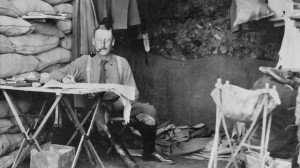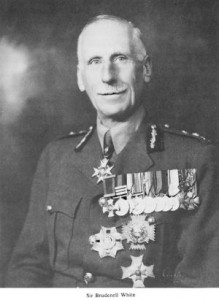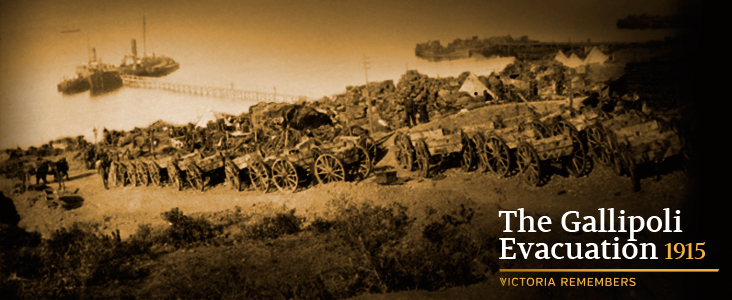The Evacuation of Gallipoli and General Sir Cyril Brudenell Bingham White
Australian Lieutenant Colonel Cyril Brudenell White devised the detailed plan to evacuate Gallipoli in December 1915. This involved elaborate deception operations such as the so-called ‘silent stunts’ of late November, where no artillery fire or sniping was to occur from the Anzac lines. It was hoped that this would accustom their opponents to the idea that preparations were underway for the coming winter. Hopefully, the enemy would not, therefore, interpret these silences as a withdrawal.
 Brudenell White was no stranger to this kind of detailed thinking and strategy.
Brudenell White was no stranger to this kind of detailed thinking and strategy.
White was one of the founders of the AIF and rose to become Chief of the General Staff. He was born on 23 September 1876 at St Arnaud, Victoria. He became a bank clerk at the age of 16 and in 1896, aged 20, he joined the 2nd Queensland Regiment.
White transferred to the permanent forces and was commissioned into the Queensland Regiment of the Royal Australian Artillery in June 1899. In February 1902, he sailed for South Africa with the Australian Commonwealth Horse – arriving late in the war he saw little action and returned to Australia in July.
In 1904 White was appointed Aide-de-Camp to the General Officer Commanding the Australian Military Forces (AMF) and the following year, in November, he married Ethel Davidson. In 1906 he became the first AMF officer to attend the British Staff College. Returning to Australia in 1908, he was promoted to captain, joined Colonel William Bridges’ staff but soon returned to England on exchange to the War Office.
 Having been promoted to major in 1911, White returned to Australia in 1912 to take up the post of Director of Military Operations at Army Headquarters, Melbourne, where he formulated plans for raising, equipping, training and despatching the Australian component of a combined Australian/New Zealand division, should war arise. White was made acting Chief of the General Staff in July 1914 and upon the outbreak of war in August, having prepared, was able to meet the Government’s offer to Britain of a force of 20,000 men for overseas service.
Having been promoted to major in 1911, White returned to Australia in 1912 to take up the post of Director of Military Operations at Army Headquarters, Melbourne, where he formulated plans for raising, equipping, training and despatching the Australian component of a combined Australian/New Zealand division, should war arise. White was made acting Chief of the General Staff in July 1914 and upon the outbreak of war in August, having prepared, was able to meet the Government’s offer to Britain of a force of 20,000 men for overseas service.
He became Chief of Staff of the 1st Australian Division, AIF, had the first contingent in Egypt by December 1914 and planned the landing at Gallipoli. He was promoted to Brigadier General in October 1915, and planned and supervised the evacuation of Anzac. Back in Egypt he was largely responsible for overseeing the AIF’s expansion and he went to France as Brigadier General, General Staff, AIF.
Although the AIF was commanded by the British general William Birdwood, White has been credited as being the driving force behind its operation on the Western Front. In January 1917 he was promoted to temporary Major General. That July, he rejected an offer to command the Australian Corps and remained a member of Birdwood’s staff. The following June, White followed Birdwood, now appointed to command the British 5th Army, and became Major General, General Staff, 5th Army.
In November 1918 White was promoted to temporary Lieutenant General and made Chief of Staff, having briefly presided over the Demobilisation and Repatriation Branch. He returned to Australia in June 1919 and worked on the future organisation of the AMF. He retired in 1923 and was appointed Chairman of the Commonwealth Public Service Board, becoming responsible for overseeing the transfer of departments from Melbourne to Canberra. Upon retiring in 1928, he continued to serve on a number of business and charitable boards, including the Board of the Australian War Memorial.
In 1940 he was recalled to become Chief of the General Staff, but his tenure was short-lived. White’s greatest achievement had been in the previous conflict: one of the founders of the A.I.F., he had become its ‘tactical and administrative commander in all but name’. A consummate chief of staff, his distinction in the role had denied him senior command and the public recognition that went with it. Nevertheless, Charles Bean described him as the greatest man he ever knew, and his judgement was shared by many.
On 13 August 1940 White flew from Melbourne in the company of three Federal ministers, James Fairbairn, Sir Henry Gullett and Geoffrey Street; their aircraft crashed near Canberra aerodrome, killing all on board. After a service at St Paul’s Cathedral, Melbourne, with state and military honours, White was buried in Buangor cemetery, Victoria. His wife, two daughters and two sons survived him. A portrait of White by John Longstaff is in the Australian War Memorial, he is commemorated by a bronze plaque in the Church of St John the Baptist, Canberra and his gravesite was recently restored with a grant from the Anzac Centenary Local Grants program.
Sources , Australian War Memorial and the Australian Dictionary of Biography.






